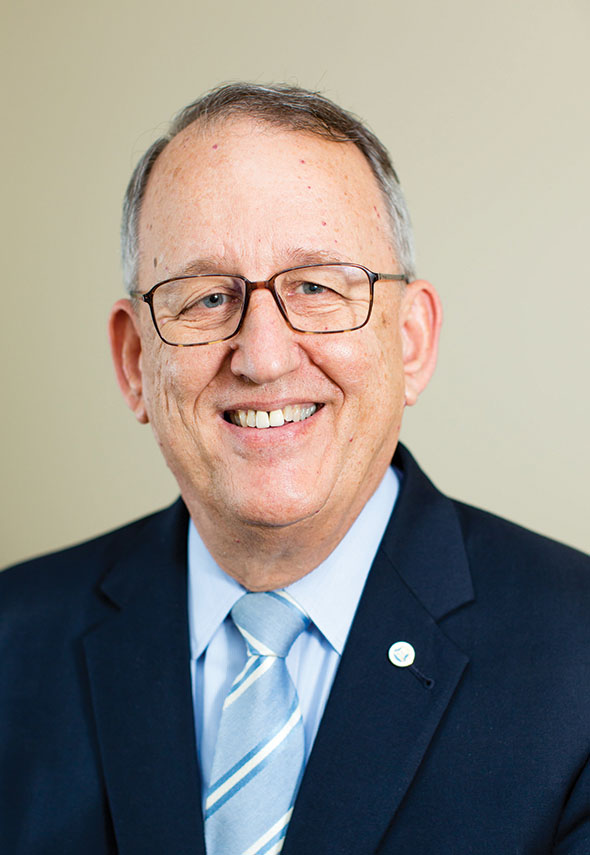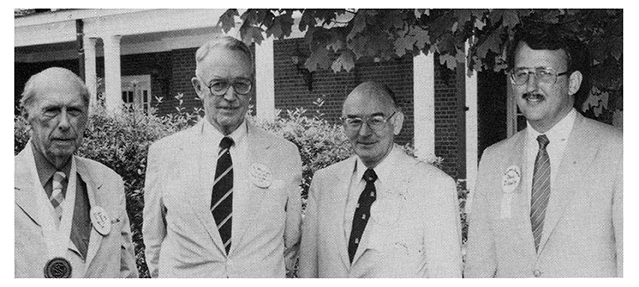100 Years of GAA Staff Service
Posted on March 2, 2022Since the first University graduate in the last days of the eighteenth century, nearly 19,000 men and more than 400 women have been privileged to tread the ground that Davie trod, and to breathe the air that Polk breathed. And the greatness of the institution is not in brick and mortar, not in the grounds and buildings, not in laboratories — nay, not even in its faculty, as able and distinguished as it has always been. It is in these souls that for more than a century and a quarter have been scattered throughout the world, living the ideals learned here. The tree lives for and because of its fruit; the University lives for and because of its alumni.
It’s natural then; it’s proper; and more important still, it’s an obligation on University men to keep in touch with each other and the University that lead them into the larger life which they now possess. Although each is not personally known to all the group, although never assembling in a body, although scattered throughout the world and almost a century and a half of time, there is a definite and compelling tie that binds together all University men from Hinton James down through the last of the 800 men who recently matriculated. When a man registers in this institution, he instantly becomes the recipient of this heritage — a heritage as old, as rich, and as complex as the very nation; he becomes a citizen in a group of bigger-visioned, higher-purposed men because the State and the Alumni of the University have founded and built here in Chapel Hill the University of North Carolina.
Handbook of Alumni Work
—Daniel Lindsey Grant (class of 1921)
November 1925

Douglas S. Dibbert ’70
The GAA dates back to May 31, 1843, when N.C. Governor John Motley Morehead (class of 1817) and 30 Carolina alumni came together at UNC’s Commencement to launch what today is a 179-year-old self-governed, not-for-profit association that continues to inform and engage more than 350,000 living Carolina alumni. In its earliest years, the GAA’s offerings were largely limited to an annual meeting and reunions at Commencement. By the end of the 19th century, almost entirely volunteer-driven local clubs provided programs across North Carolina and north and south along the East Coast; annual dues were collected (starting at $1); records were maintained; and reunions continued. In 1912, Louis Round Wilson (class of 1899) became the first editor of the Alumni Review, which you now read as the award-winning Carolina Alumni Review.
It wasn’t until 1922, 100 years ago, that Daniel Lindsey Grant (class of 1921) from Sneads Ferry became Carolina’s first full-time alumni secretary. His successor, J. Maryon “Spike” Saunders ’25, a Durham native, began his 43 years of service in 1927. That same year, at the newly opened Carolina Inn, Spike hosted the first meeting of the American Alumni Council. Upon Spike’s retirement in 1970, Clarence Whitefield ’44, also from Durham, began his dozen years of service.
The GAA’s home has wandered across campus from the Alumni Building on McCorkle Place to South Building and later to the Carolina Inn. In the fall of 1970, the GAA moved into what had been Bryan Apartments (also known as Carolina Inn Apartments). In the late 1980s, as part of Carolina’s Bicentennial Campaign, the GAA raised $12.5 million from more than 14,000 donors to construct and furnish the George Watts Hill Center, which is also home to The Carolina Club.
From its founding, the purpose of the GAA has remained 1) “to perpetuate the friendships formed in collegiate years,” 2) “to promote the welfare of alma mater” and 3) “to promote the cause of education generally.” Each day, somewhere the GAA is informing and involving Carolina’s alumni with our alma mater and/or with each other. Our award-winning communications and award-winning programs provide a growing menu of opportunities for alumni engagement.

In the beginning the title was alumni secretary; today it is president. The four who have held the position are pictured here in 1983: Daniel Lindsey Grant (class of 1921), J. Maryon “Spike” Saunders ’25, Clarence E. Whitefield ’44 and Douglas S. Dibbert ’70.
This year, in issues of the Review, on our website, with our programming and with social media, we’ll celebrate the past century and remind and share with you the many ways alumni records, communications, programs and membership have evolved over the past century.
Carolina alumni are legendary for our passionate loyalty to our University. We each enjoyed our own special experiences and formed many meaningful and lasting relationships. UNC remains strong because of the ongoing support provided by Carolina’s former students. Your GAA will continue to serve all Carolina students — past, present and future.
Yours at Carolina,

Douglas S. Dibbert ’70
